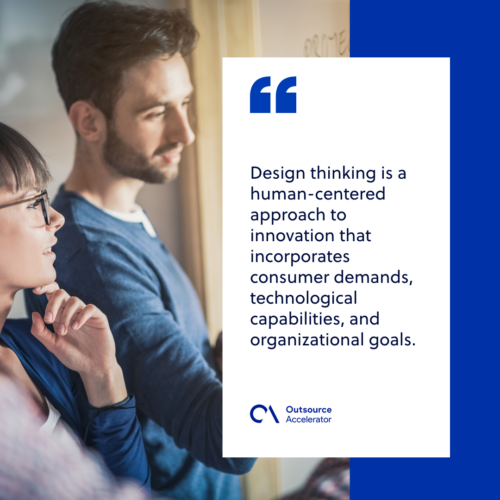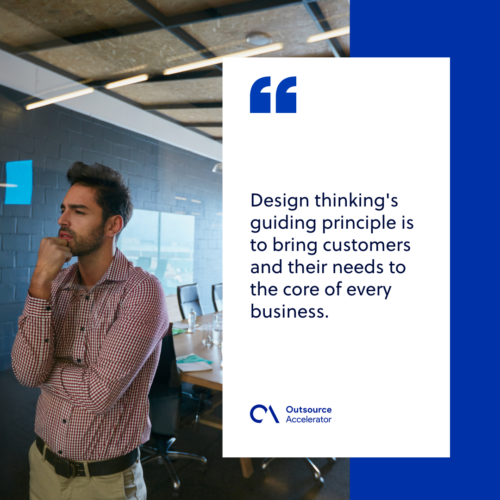Design thinking
Definition
What is design thinking?
Design thinking is a human-centered approach to innovation that incorporates consumer demands, technological capabilities, and organizational goals. IDEO CEO Tim Brown is one of the pioneers and most outspoken advocates of this concept.
Design thinking involves putting yourself in your customer’s shoes and implementing changes to business products or services. Based on technological, financial, or time restrictions, business leaders can identify what can be improved.
Then, design thinkers can build plans and strategies based on their findings to ensure that the consumer remains at the center of an improvement strategy.
It’s not simply a way of finding creative ways to resolve issues or a starting point for developing solutions; it is also a means to encourage a company to prioritize customer demands.
As many sectors become digitized and adaptable, design thinking optimizes goods, services, and even marketing to guarantee that the business is always establishing relationships while fulfilling consumer needs.
What is obvious for a corporation may not necessarily work for customer. Businesses should use human-centered design to improve customer experience (CX) while improving goods or services.

5 elements of design thinking
Design thinking’s guiding principle is to bring customers and their needs to the core of every business. It’s all about producing new value and designing for change.
Rather than developing a product and finding methods to improve people’s lives, companies should begin by determining what users truly want and need and then working toward that objective.
Here are the five key elements of the design thinking process:
Human-centered
It won’t work if businesses don’t understand the customer who will use what you’re trying to make. This approach begins with empathy and then proceeds onto research to truly understand people—clients, consumers, and users.
Creative and playful
It’s important to embrace diversity by creating an open, playful environment. It enables you to think of the issue, analyze it from various perspectives, and consider possible approaches.
Iterative
It’s important to keep addressing and reframing the problem once you’ve developed a solution or product. Enumerate, check, and validate — early testing and feedback guarantee that you’ll make actions and improvements that consumers will appreciate.
Collaborative
People from various professions collaborate to establish a multidisciplinary team that supports different perspectives and client collaboration. Performing under a healthy corporate culture is a great way to get things done quickly.
Prototype-driven
Businesses may use a prototype to present and test their data. Creating physical representations of solutions, whether it’s a sample product or a design on paper, helps businesses share and receive feedback.

Design thinking and BPO
Intellectual resources are the foundation of the business process outsourcing (BPO) sector.
Although robotic process automation (RPA) and artificial intelligence (AI) are increasingly used to delegate tasks to machines, there is still a significant amount of work that involves human interpretation.
Consumers will work with software or machines as technology advances. Design thinking can help business owners alleviate the challenges.
It can also assist in identifying new areas for development and automation. As previously mentioned, design thinking is ideal for solving complex problems.
Complex problems are difficult to solve because they are connected with other issues, and lack information. This is a problem that affects every organization, including the BPO sector.
Design thinking enables every segment of business operations to harness the potential of the digital market, just like Six Sigma concepts did for big corporate processes.
To eventually achieve the organization’s greater vision to offer outstanding customer experiences while attaining extraordinary growth and agility, rather than simply a traditional cost-cutting strategy.







 Independent
Independent




